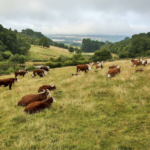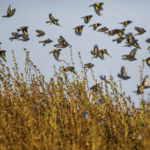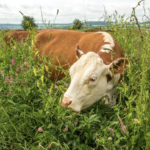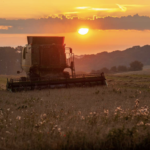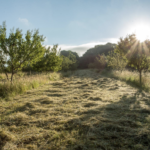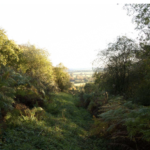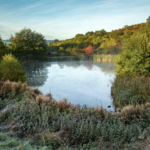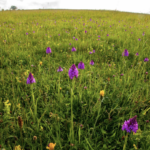Pasture Champions: Ian Boyd continued…
Floristically enhanced grass margins.
These are 6m wide and around every arable field. They offer insects a permanent refuge.
Wild Bird Seed Crops
Large flocks of goldfinches and linnets winter on our farm feeding on the mustard, quinoa, kale, fodder radish, chicory and cereal crops. These then attract merlin, red kites, sparrowhawks, hen harriers and short-eared owls.
- Permanent pasture
- Goldfinches and linnets Cotswold Beef
- Herbal leys
- Organic spring barley and overwintered stubble.
- Orchard
- Woodland
- Ponds
- Wildflower Meadows
Herbal leys
The herbal leys are a magnet for the roe and muntjac deer and numerous hares. In summer, the legume flowers, especially sainfoin, provide much needed food for pollinators all summer as well as improving the soil.
Organic spring barley and overwintered stubble
This is home to many species but especially the skylark. In the lee of the wind in the stubble, 50 skylarks can jump up in front of you. Their descending aerial song almost defines summer.
Orchard
The orchard is both for grazing and hay making as well as a crop of apples for juicing and food for several bee hives.
Woodland
There are 35 ha of scrub and woodland across the farm, half of it planted 20 years ago.
Ponds
4 ponds were created across the farm, giving a home to a whole new selection of species on our previously dry Cotswold farm.
Headline species. Duke of Burgundy butterfly. Corn bunting. Barn owl, Little owl, Tawny owl, hares, Skylark, cuckoo.
Occasionally seen: Hen harrier, Yellow wagtail. Short-eared owl. Quail. Grasshopper warblers, ring ouzels
What do you do to encourage this biodiversity and what are the lessons learned you'd like to share?
To encourage this biodiversity has needed a mindset change away from intensive production-oriented farming. The whole farming system has to be a conversation with nature, considering at every stage how biodiversity can be helped. A mosaic of different habitats is important as it is the edge of habitats where much wildlife is found.
Creating the wildflower meadows from arable fields can be fraught process but all you really need is a topper and a lot of patience.
Very often a farm is judged by it’s headline species. Whilst any rare and special species is great, the emphasis perhaps ought to be on the sheer mass of any biodiversity. A damp meadow heaving with insects is every bit as important as a rare species.
How it is connected across the farm and beyond?
There are a mosaic of different habitats across the farm with Floristically enhanced grass margins around every arable field. One larger field had a Beetle Bank created through the middle to break it up. A lot of tree planting was done 20 years ago (though sadly with much ash) and these areas are well connected.
All my neighbouring farms are conventionally managed. Increasingly there is greater acceptance of the way we farm. With the advent of ELMS, our farm is well placed to offer guidance and reassurance to others who may start off down this path.
And the benefits to the farm are...?
Our farm has benefited environmentally, economically and socially.
Environmentally our wildlife increased hugely since the monoculture arable days and it has given me a lot more to photograph.
Economically we have developed a brand “Cotswold Beef” to sell our produce with. It offers us great opportunities for upselling. We are currently developing tourism opportunities based on our wildlife.
Socially we meet a lot of people and share what we have to offer with them. Prior to the pandemic, we had 100’s of visitors each year. We anticipate this increasing in the future.
How you monitor it?
My primary method of monitoring the farm’s biodiversity is with my camera which is great for giving talks but it really does not satisfy the current requirements of evidence building and data.
In the past I have had numerous bird surveys done by our local bird survey group. They tend to do it as a hobby and their skill at identifying distant birdsong is critical. These surveys have been intermittent. Apart from personal interest there has been limited use of the data.
With the advent of ELMS, this data could and should be more important than ever.

